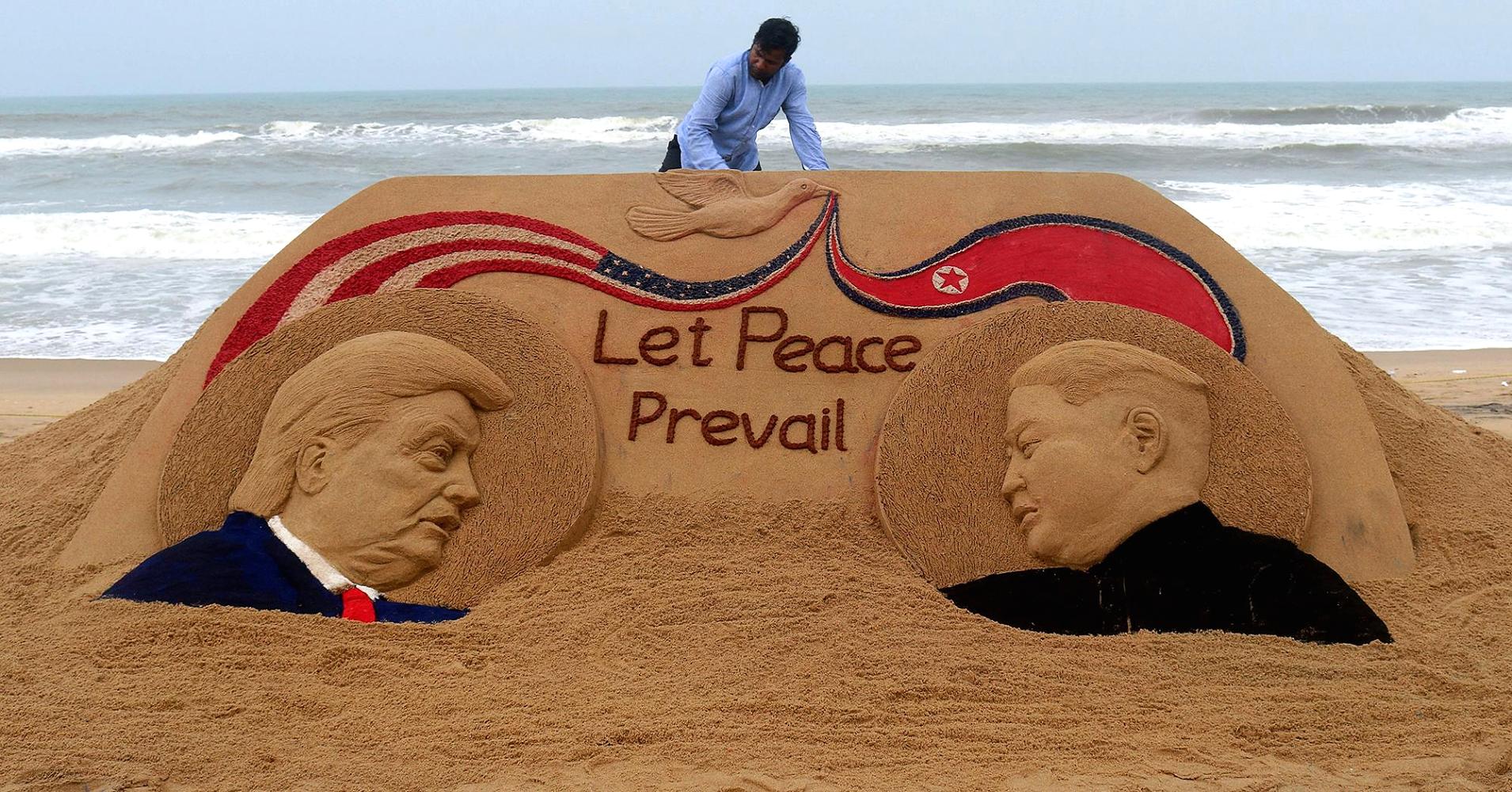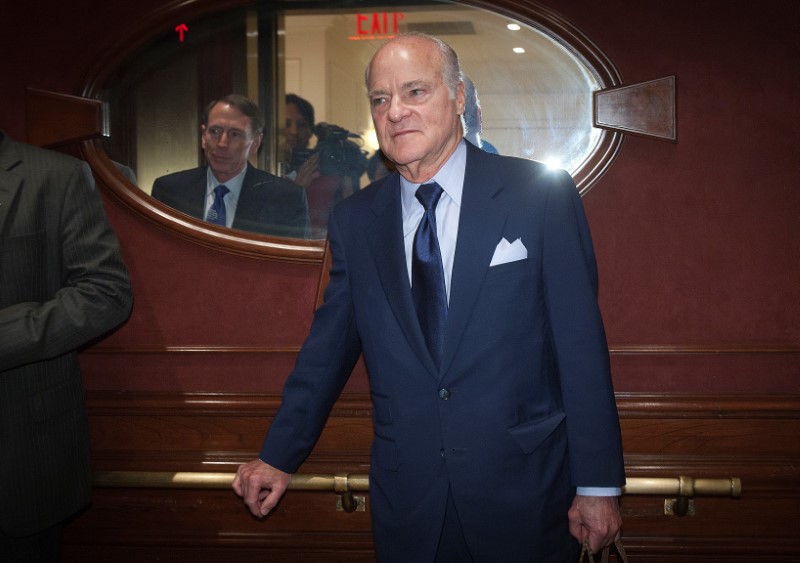
SEOUL— President Donald Trump and Kim Jong-un of North Korea will hold the first-ever meeting between leaders of their two countries on Tuesday morning in Singapore, carrying with them hopes to end seven decades of hostility and the threat of a nuclear confrontation. Amid this backdrop, a key question is why Kim Jong-un is engaging with the outside world now?
The North Korean leader has been in power for more than six years, in part through reshuffling of top brass. He’s even had potential rivals to his leadership killed, including an uncle and half-brother. Described as intelligent and “ruthless,” according to North Korea watchers and defectors, his actions and messaging have been consistent: I’m in charge. Nuclear prowess is a crucial part of his regime’s identity.
Still in his 30s, Kim is ruling 25 million people in a country roughly the size of Pennsylvania. Founded after World War II, North Korea should have collapsed when a key benefactor, the Soviet Union, crumbled. Yet North Korea persists in an improbable mashup of state actors, scrappy private business owners hustling in vast open-air markets, and systematic violations of human rights by the regime. The country suffers under the weight of extreme poverty and isolation.
More from Global Investing Hot Spots:
North Korea-South Korea Summit attempt at bridging divide
Trade war with US could be tipping point for China’s economy
In this sometimes surreal backdrop, Kim has departed from his father’s “military first” approach and is instead engineering a “dual track” policy to advance his nuclear program and economy.
Fixated on the long game, his economic playbook is likely to include special economic zones that allow for experimentation and rule-bending in controlled settings. North Korea will also need much-needed capital from international investors as the country’s infrastructure, including power grids, buildings and transportation, is outdated. Construction activity inside the North also suggests a bet on expanded tourism that would generate hard currency.
His father, Kim Jong II, is believed to have left his son around $4 billion in overseas bank accounts, funds the younger Kim has likely used as he ramped up his nuclear arsenal.
With his nuclear weapons house in order, Kim is grinding out top-down economic reform, which may help explain why he’s choosing to engage. “North Korea, having secured nuclear power, is ready to focus on the other policy goal of the regime: economic development,” said Agathe L’Homme, Asia analyst at The Economist Intelligence Unit.
The North’s economy hasn’t grown dramatically since Kim took power in late 2011. The Bank of Korea (South Korea’s central bank) has estimated North Korea’s gross national income stood at 36.4 trillion won (roughly US$33.8 billion) in 2016. South Korea‘s per-capita GNI was 31.98 million won, which is 22.1 times larger than the North’s 1.46 million won.
Kim Jong-un rules a country that has suffered famine, depends on China for food and fuel and has poured its limited resources into creating an arsenal of nuclear bombs and intercontinental ballistic missiles. The United Nations estimates 41 percent of the population is undernourished.
Yet despite the limits of the North’s economy, a growing market mindset has sparked everyone from ordinary citizens to government officials to do private business. North Koreans, meanwhile, want more opportunities and economic progress.
“The people in North Korea I sense are pretty well dissatisfied with what he (Kim) has produced,” says Bruce Bennett, a longtime North Korea watcher and senior international/defense researcher at the Rand Corp. “He promised that once he got nuclear weapons, business would get better, they would have better lives, other countries would treat them favorably. And that hasn’t happened in large part because of the sanctions.”
Tightening and enforcement of sanctions appeared to be working. But more recent reports suggest North Korean shipments of seafood and fuel have appeared in China.
The young North Korean leader could rule for 40-plus years. No one can know for sure, but Kim may be weighing his financial reality against “maximum pressure” and sanctions.
Strategies for North Korean economic reform include special economic zones and ventures through cooperation between the two Koreas. The two nations were at the center of the Panmunjom Declaration announced in April. The declaration calls for a formal end to the three-year Korean War. While a ceasefire was declared in 1953, the two nations are still technically at war.
Potential reopening of two joint economic ventures is on the table — the Kaesong Industrial Zone and the Mount Kumgang Tourist Region, both in North Korea. Hyundai, the South Korean conglomerate, was an operator of tours to the two economic ventures and has announced plans to resume these activities, noted analyst L’Homme of The Economist Intelligence Unit.
These special economic ventures and zones in part are preferred as they offer platforms to experiment and to bend rules in ways the regime might not be ready to roll out nationwide, said Andray Abrahamian, former executive director of Choson Exchange, a Singapore-based nonprofit that supports North Korean entrepreneurs.
Tourism is also likely to be part of an economic push, as visitors generate much-needed hard currency. Recent satellite images show the development of a massive construction site in the Wonsan-Kalma east coast tourist area in North Korea, according to NK News, a news source devoted to North Korean issues. Construction includes an artificial lake, and the building activity appears to be designed for South Korean tourists.
North Korea also needs to attract foreign investment that sanctions prohibit. As deal-making moves forward, investments are likely to be led by China, South Korea and possibly Japan. China provides North Korea with most of its food and energy supplies, as a priority for China is stability on the Korean Peninsula.
Any potential U.S. investment in North Korea would have a legitimizing effect and might include technology and entrepreneurship guidance from Silicon Valley, according to Geoffrey See, founder of Choson Exchange. The Trump-Kim summit is being held on the Singaporean island of Sentosa.
“Americans will be the most risk averse,” said Abrahamian. “Even if some sanctions go away, it’s still a difficult investment environment.” Part of the hesitancy stems from past experiences and soured deals. The North’s reputation among foreign investors is wobbly.
“Whoever goes for investing in North Korea should see it as a gamble and treat it as such,” said analyst L’Homme in an email. “Some will do it for political reasons (like Hyundai), have the implicit (or not) backing of their respective governments (Chinese companies or South Korean ones). In any case, any (Western) investment will have to wait the lifting or easing of some of the United Nations sanctions (or flout them and bear the risks associated).”
Kim Jong-un has his work cut out for him. Many state-run businesses still exist, though they are largely inefficient. Power outages are frequent, and there’s no internet. Coherent lending activity or rough outlines of a capital market or even Silicon Valley don’t exist. There’s no framework for private property ownership in a formal way.
“It’s the early stages of marketization of North Korea,” said Bennett of the Rand Corp. “The markets don’t totally dominate the economy yet.”
Some of the most successful private enterprises are run by elites and a new moneyed class. This newly wealthy is referred to as the donju, or rising bourgeois. It’s difficult to estimate the group’s size or scope of their business activities, according to experts. But inside a place like North Korea, economic power translates into political power — influence that potentially threatens the North’s single-man leadership model.
Kim Jong-un could reduce the power of donju. But that would hurt the North’s trajectory as the newly rich are central to its economy and a key source of government income, according to L’Homme. As the moneyed class evolves further, they’re likely to test the balance of power between the state and business community. But both sides ultimately want what Kim wants: survival.
Looking even beyond the Trump-Kim meeting in Singapore, don’t expect deal-making and reform, as was seen with China or Vietnam. That’s not possible, because North Koreans don’t enjoy personal freedoms. While private business broadly is tolerated, activities such as consuming foreign media are forbidden. And it’s in this way that Kim is steering his economy — incrementally and on his terms.
“North Korea’s true intentions are not known,” said Victor Cha, senior advisor and Korea chair in testimony last week before the U.S. Senate Committee on Foreign Relations. Cha was George W. Bush’s top advisor on North Korea. “However, its goal may be to reach a peace agreement with the United States and all of the economic benefits that it would bring from China and South Korea, among others, but that ultimately Pyongyang will part with some, not all of their weapons capacity,” Cha said.

